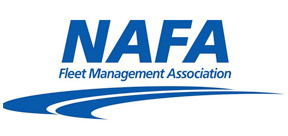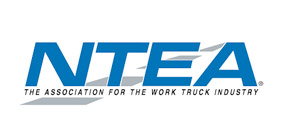Vermont city aiming for net zero by 2030

When it comes to net zero energy, the city of Burlington, Vt., holds the road map to success.
Sept. 9, 2019, Burlington Mayor Miro Weinberger, in conjunction with the Burlington Electric Department, released the Net Zero Energy Road Map, which outlines steps toward the city’s net zero energy by 2030 goal.
“I know that many Burlingtonians believe, as I do, that we are in a climate emergency and, at the same time, that it can feel tough to know how to respond to the scale of this problem,” Weinberger said in a September 2019 press release. “With this road map in hand, we now have clear next steps for what we can do to respond at the local level to this global crisis.”

Energy efficiency is not new for Burlington. As early as the 1990s, the city was looking at ways to reduce its carbon footprint. Then, in 2014, BED purchased the Winooski One Hydroelectric Facility, making Burlington the first city in the U.S. to generate all of its electricity from renewable sources.
Two years later, Weinberger announced the goal of making Burlington the nation’s first net zero city by 2030 across three sectors: electric, thermal and ground transportation.
“This is a big goal,” Weinberger said in a statement released in October 2019. “But our community has accomplished big climate and energy goals before.”
Taking the reins of this project, BED contracted with Synapse Energy Economics and its partner firm, Resource System Groups, to create a report that would show what a net zero Burlington could look like, outlining the steps needed to get there. Thus, the Net Zero Energy Road Map was born.
A major key to attaining net zero status is reducing, if not eliminating, use of fossil fuels throughout Burlington. The road map identifies four key pathways along this route: efficient electric buildings, electric vehicles, a district energy system and alternative transportation, then lays out strategies for implementing these changes.
“This report tells us what a largely decarbonized Burlington by 2030 would look like,” Weinberger noted in the release.
These pathways were developed through use of analysis tools using various scenarios in order to find the ones that best fit what Burlington hopes to achieve. Even now, the city is working on making these goals a reality.
Electric buildings are the first pathway. The main goal in this area is to replace furnaces with ducted heat pumps and boilers with ductless heat pumps. According to the September news release, the goal is to decrease the use of fossil fuel heat sources by 60%.
Simply electrifying a building’s heating is not enough, however. That building must also be able to retain heat, demanding less energy use. Many of Burlington’s structures are old, requiring upgrades to make them more efficient. This presents another challenge, in that a number of these buildings fall under historic preservation guidelines.
The historic and the modern do not necessarily have to clash, however, and the city is looking at ways to make the buildings more efficient while maintaining their historic integrity.
Despite Burlington’s passion for going net zero, the road map acknowledges that some homeowners may struggle with the cost of replacing their space and water heating systems, especially if those systems have not reached the end of their useful life.
Because of this, BED and Vermont Gas Systems created the Net Zero Homes program, offering incentives to both residential and commercial customers who switch to energy-efficient heat pumps and heat pump water heaters. Higher dollar amounts are available for low-to-moderate income households making the switch.
Other programs and incentives for net zero buildings are outlined within the road map.
The second pathway is electrifying transportation, with a focus on light-duty vehicles, school buses and transit. Ideally, the percentage of new electric vehicle purchases will reach 90% by 2024. This means replacing as many as 10,000 gasoline-powered, light-duty vehicles even before the end of their useful life span.
The goal for this pathway is to reduce the city’s total fossil fuel use by 20%. It was noted in the September 2019 news release that this applies to residents’ vehicles only, and not to those who commute to Burlington for work or recreation.

Like upgrading a building, replacing one’s vehicle can be costly. To encourage Burlington residents to make the switch, BED has announced new electric vehicle and plug-in hybrid electric vehicle incentives, in addition to ones that already existed. BED also plans to expand public charging stations throughout the city.
District energy is the third pathway identified. This will apply mostly to Burlington’s larger, more difficult-to-heat structures and could account for up to 15% of the city’s fossil fuel reductions. Again, the assumption is these buildings will have undergone significant weatherization upgrades.
Plans for this area work on the assumption that Burlington will use a two-phase model, with phase one set for 2021, followed by expansion in 2024.
Phase one involves capturing waste heat from the city’s McNeil Generating Station and supplementing it with renewable natural gas. Phase two includes biogas and waste heat captured from the city’s wastewater treatment plant.
The fourth pathway is similar to the second and, in a way, builds on it. This final pathway calls for changes in travel modes, including implementation of alternative transportation, such as cycling and walking and greater investment in public transit.
It also suggests that travel price signals, such as higher fuel costs, vehicle travel charges and increased parking fees and costs could help. Demand management changes could also help, including increased investment in programs such as ride sharing, van pooling, telecommuting, parking buyout and transit subsidies.
Shifting population and employment growth to more densely developed area was also suggested within the road map.
While all of the above may seem ambitious, Weinberger, BED and other Burlington entities have no doubt it is doable.
“We now know that it really is possible for Burlington to largely decarbonize the heating and ground transportation sectors by 2030 – and this report makes it more clear than ever that achieving this goal will take actions by all of us,” Weinberger said in the September 2019 press release.
In his October 2019 statement, Weinberger called on everyone in Burlington to do his or her part in working toward this goal.
“My ask for all Burlingtonians is that, starting today, you consider efficiency and electrification every time you’re making a decision about your homes, businesses and cars,” he said. To view a PDF version of the Burlington Net Zero Road Map, visit burlingtonelectric.com/NZE.


